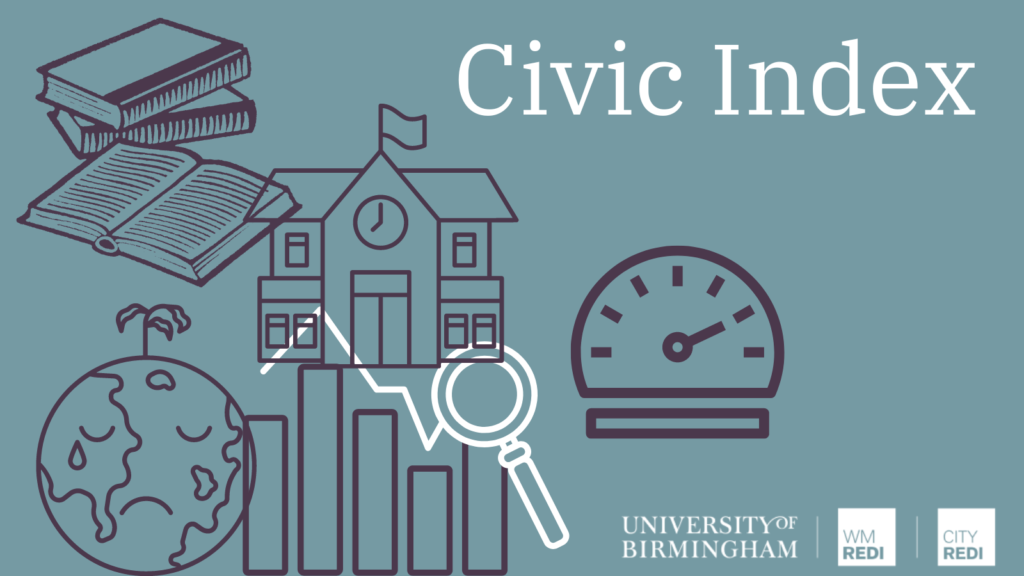
On 30th August, we launched the Civic Index, part of the new WMREDI Data Lab. The event featured a presentation by Josh Swan who led the development of the data dashboard, followed by a Q&A session.
What is the Civic Index
The Civic Index project is an interactive dashboard tool in which Universities can assess their Civic impact on their local place. Expressed in four categories Economic, Social, Institutional, Environmental, and Physical, the Civic Index compares 116 different universities on a variety of metrics that translates into an overall score of their local impact.
The Civic Index Mission Statement
Enabling Higher Education Institutions (HEIs) to benchmark and access their own civic impact upon the place they are within and so to be pioneers for constructive policy change for the benefit of the civic community.
Objectives of the project:
- Institutions are able to measure themselves as anchor institutions through their own policies and activities.
- Assessing contributions of Universities to the well-being and prosperity of a place.
- Assessing the collaboration of Universities in a place where there is more than one institution.
- Develop metrics that measure the quality of institutional engagements.

Maximising the Impact
Maximising the impact of the civic index is critical, at the launch it was discussed how to do this:
- Convergence of qualitative data from case studies and quantitative data in the index.
- The index should be a tool that can provide insight to a Higher Education Institution on how it impacts its surrounding area.
- Measures things like graduation retention can help us understand the impact of an HEI on a place.
- Using the Knowledge Exchange Framework (KEF) we can use their metrics to understand the role funded institutions have in knowledge exchange for the benefit of society.
Constructing the Index
Moving onto the construction of the Index, we looked at scoring methodology, where the scoring points: Metric Score, Category Score, and Overall Score were between 0 and 1.
When looking at a formula for creating a metric score, this will always generate a value between 0 and 1, even if the input values are negative.
Data Challenges
Specific data challenges include finding a data source that addresses all HEIs and not one institution to the index relying on data sources like KEF and HESA too heavily.

Challenges that were spoken about include:
- Finding a data source that addresses all HEIs, not just one institution.
- Using data that covers the 116 HEIs used in the Index.
- Wrestling match between the quality of metrics and number of HEIs included.
- Institutions are reluctant to share their data with others out of fear of looking bad.
- The rarity of some data for categories… e.g. finding Economic measures for 116 HEIs proved very difficult.
- The index relies too heavily on data sources such as KEF and HESA.
Future developments within this project include adding a new category for Policy and using more academic papers and case study work to bolster the index’s impact on changes in policy.
The data lab was then presented, you can view it here.
This blog was written by Ellie Macdonald, Digital Marketing Apprentice, City-REDI / WMREDI, University of Birmingham.
Disclaimer:
The views expressed in this analysis post are those of the authors and not necessarily those of City-REDI, WMREDI or the University of Birmingham.
